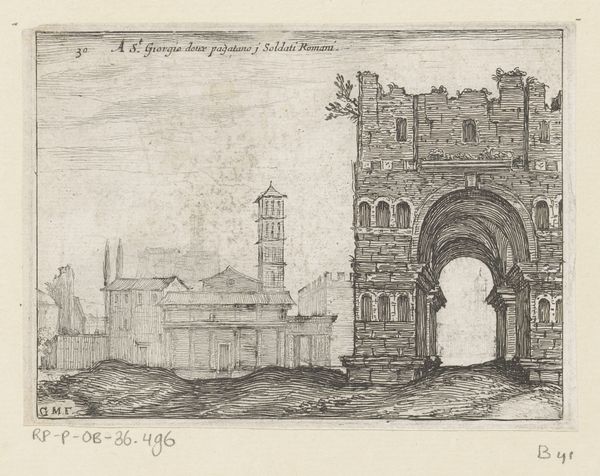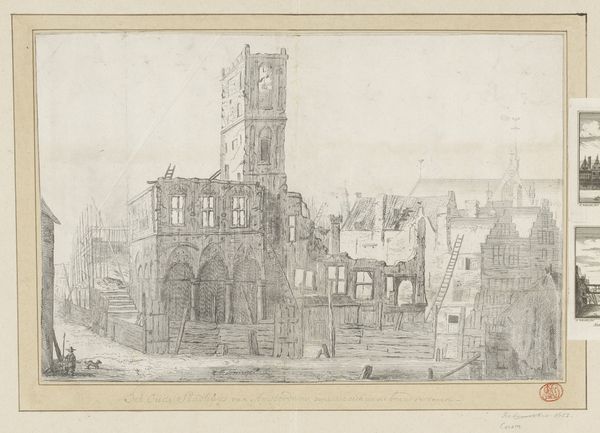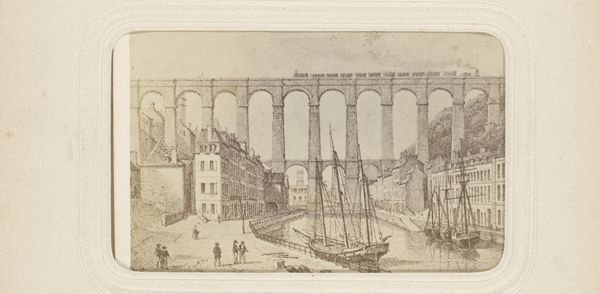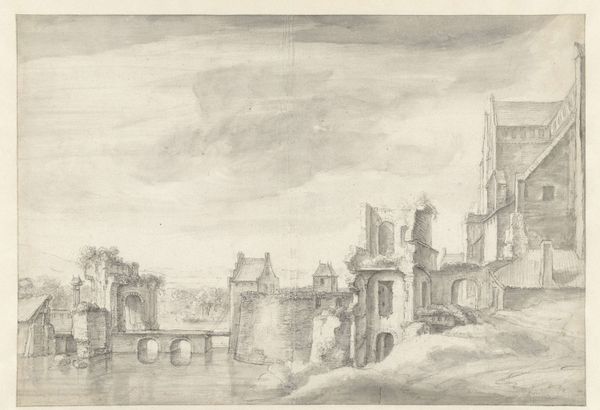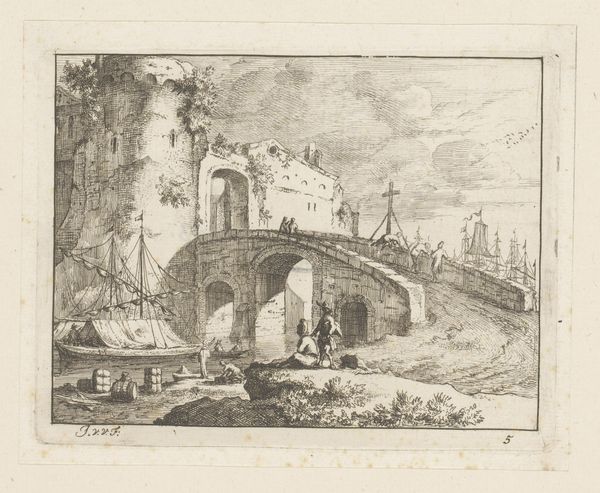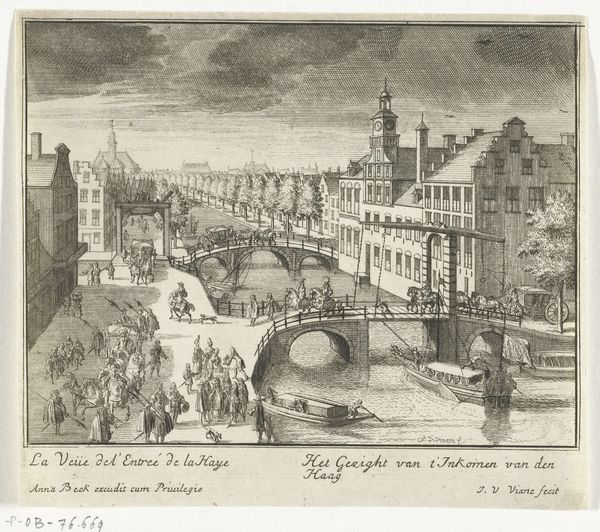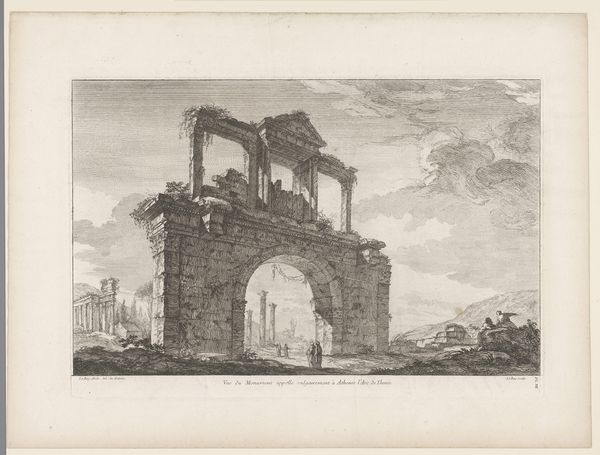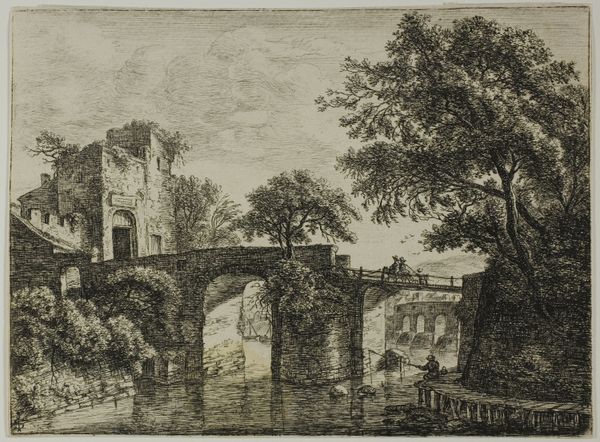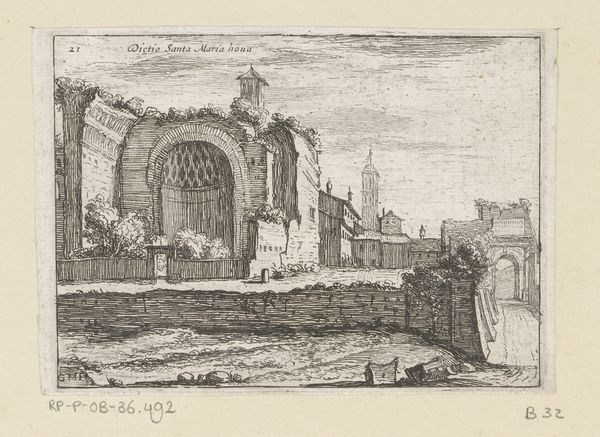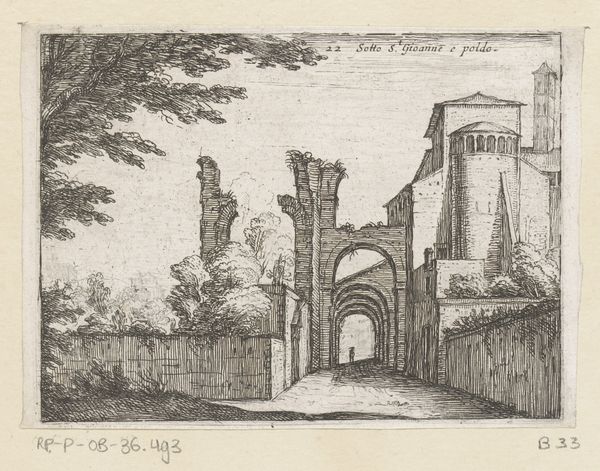
print, etching
# print
#
etching
#
landscape
#
cityscape
#
realism
Dimensions: height 153 mm, width 183 mm
Copyright: Rijks Museum: Open Domain
Alexander Schaepkens made this etching, "Onze-Lieve-Vrouwepoort te Maastricht," in the 19th century, capturing a now-vanished city gate. What was the public role of such images at that time? Well, consider the rise of nationalism in 19th-century Europe, where art became a tool for constructing national identity and preserving cultural heritage. Schaepkens, working in the Netherlands, was part of a broader movement of artists documenting historical sites and traditions. This image isn't just a record; it's an assertion of cultural pride. The detailed rendering of the gate, the inclusion of everyday figures, and the attention to architectural detail all suggest a desire to celebrate local history and traditions. To understand this artwork fully, we might consult historical archives, local histories, and studies of 19th-century Dutch art. Only then can we understand the complex interplay between art, identity, and social change.
Comments
No comments
Be the first to comment and join the conversation on the ultimate creative platform.
